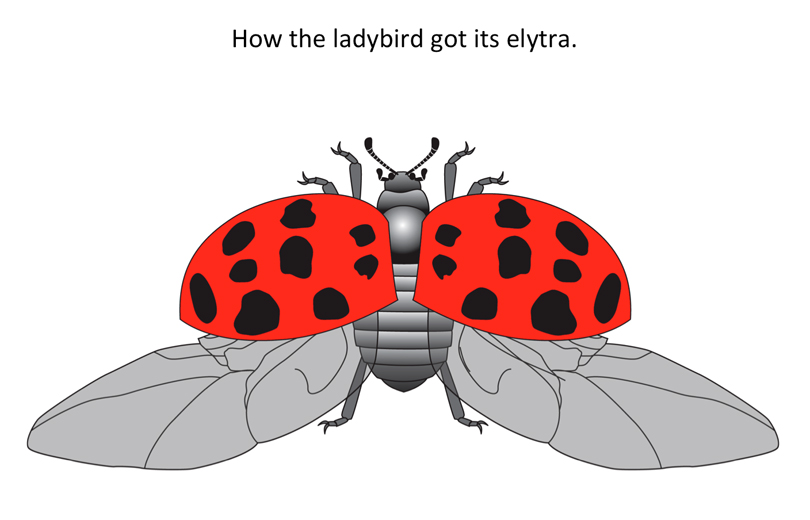| Elytra are hardened forewings. They cover the hindwings, and they can be quite gaudy, as in the ladybird beetle shown here. The elytra are spread during flight to permit hindwing flapping. Coleopterans evolved from insects with flimsy forewings, so how did they transform their forewings into protective shields? In 2009 we found out: cuticle-stiffening genes were recruited (co-opted) to the wing circuitry on three separate occasions during evolution. Given that the hindwings rely on this same genetic circuitry, how did they resist becoming just as thick as the forewings? They were able to do so because the Hox gene Ubx, which is active in the hindwing, thwarted each of these new links (downstream from the genes ap, bs, and sc) as the links arose . . . or shortly thereafter. For that reason, disabling Ubx in a beetle converts its hindwings into elytra, rather than the other way around. Oddly, the elytra of some desert beetles are fused at the midline, making flight impossible, even though the wings underneath look perfectly functional. How the medial edges of the latter elytra fuse during development is a mystery, considering that they come from separate discs. |
|
leopard | cheetah compared with butterfly | anglefish | zebra | mouse cloud leopard | giraffe | ant | beetle | treehopper stalk-eyed fly | ladybird | snake | The Interactive Fly resides on the web server of the Society for Developmental Biology. |


